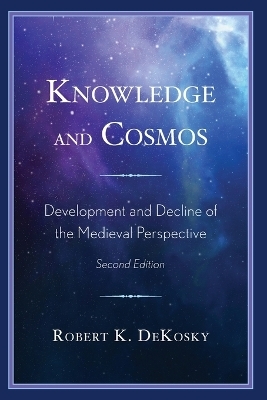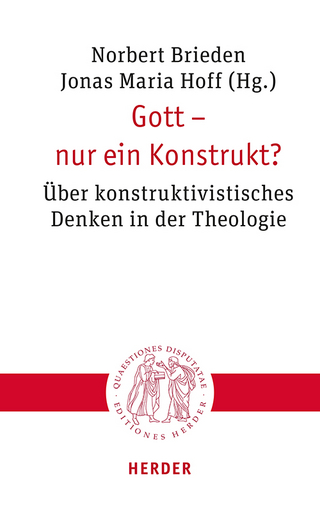
Knowledge and Cosmos
Hamilton Books (Verlag)
978-0-7618-7400-3 (ISBN)
The teleological explanation, prevalent in Aristotle’s natural philosophy, posited “final causes” (ends or goals toward which objects strove or attempted to become). Ancient classical atomists had emphasized strictly mechanical explanations, invoking direct material contact and collision of moving matter as agents of physical change. Traditions of astrology, magic, and alchemy embraced an occultist pattern of interpretation—citing hidden forces opaque to both sensual detection and rational understanding as explanations of various phenomena. Finally, the mathematico-descriptive approach interpreted natural phenomena according to geometric or arithmetic relationships; unlike the other three, this did not involve causal explanation of a process.
Part I treats development of the four patterns in the ancient period and discusses their uneasy medieval relationships with each other and with basic Judaeo-Muslim-Christian exigencies of faith. Theory of the heavens included the mathematico-descriptive approach of Ptolemaic astronomy, the teleological and mechanical cosmology of Aristotle, and occultist interpretations of astrologers and magicians. Part I then turns to matter and materiality, discussing differences among the mechanical philosophy of classical atomism, teleological emphases in Aristotle’s material theory, and occultist assumptions of some alchemists. Finally, Part I analyzes conceptions of motion, focusing on Aristotelian interpretations and critical commentaries thereon during the Middle Ages.
Part II relates struggles of leading early-modern figures to adapt new concepts (e.g., Copernicus’ heliocentric astronomy/cosmology, Galileo’s inertial theories of motion, and Kepler’s elliptical planetary orbit) to an allegiance to two or more of the four patterns of interpretation. By this approach, it identifies decreasing dependence on teleological explanation of physical phenomena as crucial to decline of the medieval perspective, followed by rejection of teleology in the natural philosophy of Descartes, and subsequent fruitful confluence of the mechanical, mathematico-descriptive, and occultist patterns in the physics and cosmology of Isaac Newton.
Robert K. DeKosky is professor emeritus of history at the University of Kansas
Acknowledgements
Preface
Part 1: Knowledge and Cosmos: Development of the Medieval Perspective
Section 1: Faith and Reason: Theories of Cognition and the Medieval Intellectual Background
Introduction to Section 1
Chapter 1: Plato and Aristotle
Chapter 2: Late Antiquity: The Platonic Philosophical Strain
Chapter 3: Islamicate Philosophical Syncretism
Chapter 4: High Scholasticism and the Universities: Aristotelian Thought Re‑enters Western
Europe
Chapter 5: William of Ockham and the 14th Century Critique of Human Knowledge
Section Two. The Heavens: Astronomy, Cosmology, and Astrology
Chapter 6: Development of Astronomy: A Mathematico-Descriptive Approach to Heavenly
Phenomena
Chapter 7: The Teleological-Mechanical Cosmos of Aristotle and Its Influence on Medieval
Natural Philosophy
Chapter 8: Astrological Causation and the Occultist Interpretation of Heavenly Bodies and Their
Influences
Chapter 9: Classical Atomism: A Mechanical Philosophy
Chapter 10: Aristotelian Conceptions of Materiality and the Teleological Mode
Chapter 11: Alchemy
Section 4: Conceptions of Motion
Chapter 12: Projectile Motion: Aristotle and His Critics
Chapter 13: Falling Bodies: Aristotle and His Critics
Chapter 14: Emergence of a Kinematic Approach to Motion
Part II: Knowledge and Cosmos: Decline of the Medieval Perspective
Introduction to Part II
Section Five: The “Revolution” in Astronomy
Chapter 15: Copernicus
Chapter 16: Responses to Copernicus
Chapter 17: Kepler
Section 6: Galileo Galilei Between World Views
Introduction to Section 6
Chapter 18: Galileo and Astronomy: Conflict Over World Systems
Chapter 19: Galileo and the Science of Motion: Physical Justification for a Moving Earth
Chapter 20: The Galilean Approach to Explication of Physical Process
Chapter 21: Galileo and the Nature of Materiality
Epilogue: Demise of the Medieval Perspective
Bibliography
Index
About the Author
| Erscheinungsdatum | 07.10.2023 |
|---|---|
| Verlagsort | Lanham, MD |
| Sprache | englisch |
| Maße | 151 x 228 mm |
| Gewicht | 721 g |
| Themenwelt | Geisteswissenschaften ► Philosophie ► Metaphysik / Ontologie |
| Naturwissenschaften ► Physik / Astronomie ► Astronomie / Astrophysik | |
| Technik ► Luft- / Raumfahrttechnik | |
| ISBN-10 | 0-7618-7400-3 / 0761874003 |
| ISBN-13 | 978-0-7618-7400-3 / 9780761874003 |
| Zustand | Neuware |
| Haben Sie eine Frage zum Produkt? |
aus dem Bereich


